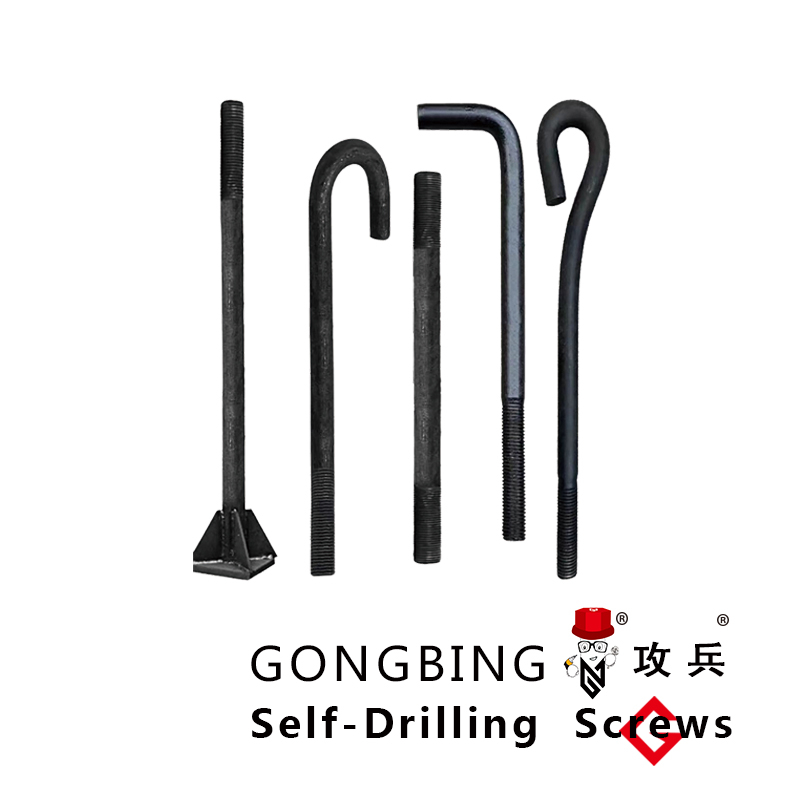Innovative Solutions for Chemical Anchor Fasteners in Construction and Engineering Applications
The Significance of Chemical Anchor Fasteners in Modern Construction
In the realm of construction and engineering, the importance of reliable fastening systems cannot be overstated. Among these, chemical anchor fasteners have gained prominence for their unique ability to provide strong, durable, and flexible connections in a variety of applications. This article will explore the benefits, applications, and installation procedures of chemical anchor fasteners, highlighting their significance in modern construction practices.
What are Chemical Anchor Fasteners?
Chemical anchor fasteners, commonly referred to as chemical anchors, are specialized fasteners that utilize a chemical adhesive to bond the anchor to the base material, typically concrete or masonry. These fasteners are often composed of a metal rod or bolt that is inserted into a drilled hole, along with a resin or adhesive that fills the space between the bolt and the substrate. When cured, this adhesive forms a robust bond, significantly enhancing the load-bearing capabilities of the fastener.
Why Choose Chemical Anchor Fasteners?
One of the primary advantages of chemical anchor fasteners is their exceptional strength. Unlike mechanical anchors, which rely solely on friction and mechanical interlock, chemical anchors create a chemical bond that enables them to withstand higher loads and resist pull-out forces. This is especially beneficial in heavy-duty applications where safety and reliability are paramount.
Additionally, chemical anchors are highly versatile. They can be used in various substrates, including solid concrete, hollow concrete blocks, and brick. Furthermore, they are adaptable to different environmental conditions, making them suitable for both indoor and outdoor applications. The ability to use these anchors in wet or high-humidity environments also sets them apart from traditional mechanical fasteners, which may be less effective in such conditions.
Applications of Chemical Anchor Fasteners
Chemical anchor fasteners are widely used across numerous sectors, including construction, civil engineering, and even in the installation of heavy machinery. Some of the most common applications include
1. Structural Reinforcement Chemical anchors are used to secure structural elements like beams, columns, and trusses in both new construction and renovation projects. Their ability to handle significant loads makes them ideal for high-rise buildings and bridges.
2. Heavy Machinery Installation In industrial settings, chemical anchors are often employed to secure heavy machinery and equipment to the floor, ensuring stability and safety during operation.
chemical anchor fastener

4. Seismic Applications In earthquake-prone areas, chemical anchors are vital for reinforcing structures, providing additional safety and compliance with building codes.
Installation of Chemical Anchor Fasteners
The installation of chemical anchor fasteners involves a few key steps to ensure effectiveness and safety
1. Surface Preparation The surface where the anchor will be installed must be clean and free of dust, debris, and moisture. Proper preparation ensures optimal adhesion of the chemical.
2. Drilling the Hole A hole is drilled into the substrate using a suitable drill bit, ensuring that the diameter and depth are compatible with the anchor specifications.
3. Inserting the Resin The chemical resin is injected into the hole. Many systems use a dual-barrel cartridge that mixes the resin and hardener simultaneously, ensuring a uniform mixture.
4. Inserting the Anchor Once the resin is in place, the anchor is inserted into the hole. It is essential to avoid moving the anchor while the chemical cures, which typically takes several minutes to hours, depending on the specific product used.
5. Curing Time The chemical bond must be allowed to cure fully before applying any load, ensuring maximum strength.
Conclusion
In conclusion, chemical anchor fasteners represent a significant advancement in fastening technology, offering unparalleled strength, versatility, and reliability. Their wide range of applications across various fields underscores their importance in modern construction practices. As engineers and builders continue to seek innovative solutions for ensuring structural integrity, the role of chemical anchors will undoubtedly grow, solidifying their place as a critical component in the future of construction and engineering.
-
Weatherproof Plastic Expansion Anchors for OutdoorBeritaJun.06,2025
-
Sustainability in the Supply Chain: Eco-Friendly TEK Screws ProductionBeritaJun.06,2025
-
Load-Bearing Capacity of External Insulation FixingsBeritaJun.06,2025
-
Double Head Bolts: Enhancing Efficiency in Industrial MachineryBeritaJun.06,2025
-
Corrosion Resistance in Chipboard Screws: Coatings for Wholesale DurabilityBeritaJun.06,2025
-
Butterfly Toggle Bolts : Enhancing Structural ResilienceBeritaJun.06,2025
